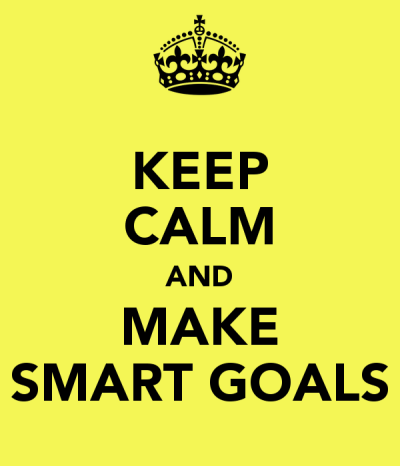At the beginning of the month, we introduced you to a few apps to help you keep your resolutions for the new year within reach. If you did happen to fall off of the resolution bandwagon however, don’t feel discouraged! Even with the best tools and the best of intentions, we all tend to get busy with other things and shift out priorities around. It’s never too late to try again, and we’ve got a few tips that may help your next round of goal-setting end in success. Let’s examine how to make the SMART goal setting process work in your favor.

What do we mean by “SMART” goal setting?
The SMART goal concept has been around for a while, best and most often associated with management principles. In the November 1981 issue of Management Review, author George T. Doran actually used the phrase in his paper titled “There’s a S.M.A.R.T. way to write management’s goals and objectives”. In his paper he noted the importance of setting objectives and goals, while also acknowledging that actually doing so can often be pretty difficult. He spells out exactly what one needs to do to make an objective or goal “SMART”. According to Doran, each objective needs to be:
- Specific – the objective needs to target a specific area for improvement
- Measurable – the objective needs to quantify or at least suggest an indicator of progress
- Assignable – someone needs to be assigned to see that the objective is completed
- Realistic – the objective needs to take into account what is realistically possible, given all available resources
- Time-related – there needs to be a set start and end to achieving the objective
Each letter is meant to be a piece of criteria to weigh your goals against to ensure you’re not setting yourself up for failure down the road. These terms are often interchangeable, so one tends to see a few of the keywords of the mnemonic swapped out for another similar or better fitting word. For instance, when the Health Sciences Library team begins its strategic planning activities for the year later this afternoon, we’ll be using this set of keywords as our guide: Specific, Measurable, Attainable
(an achievable objective that still manages to reasonably challenge you), Relevant (an objective that is consistent with any other goals you may have), Time Oriented (similar to Time-related). Just because the origins of the process related to management doesn’t mean the process can’t be adjusted to suit the needs of an individual. Once you’ve decided on the keyword structure that best serves your purpose, you can begin actually creating the goals or objectives you want to achieve on a personal level.
Creating a SMART goal
The key to creating a successful goal through the SMART process is to take a few moments to run your plan through the concepts in the mnemonic and assess if you’ve sufficiently addressed each concept to keep your goal afloat. For example, consider the following goal:
“I want to read more this year”
While a good starting place (and great to hear! We librarians are behind you 100%!), this goal could use a little work to give it the best chance at success. When setting your own goals, ask yourself how to make your goal a SMART one. If we were to make the above goal SMART, we might change it to something more like this:
“I want to read and complete one new book every month this year”
This is similar to the original goal, but now it has SMART criteria applied to it. How?
To start, the new goal is more Specific than the old one. While the old goal doesn’t specify exactly what “read more this year” means, the new goal essentially spells out that a total of twelve books (assuming the goal was created in January) will be read and completed throughout the year, one a month – it sets clear expectations. Further, the goal is now more Measurable as well. Initially, the old goal provided no metric or way to track the progress of the goal-setter, but now we know that if we haven’t completed reading one book a month, we’re behind on our goal. Next, we’ve made sure to make the goal Attainable. The important point here is to make sure to take into account all of the other activities and commitments that may interfere or overlap with the goal being set, and to also ensure that the goal isn’t too lofty. The Relevancy of the the goal being set is going to vary from person to person, but if reading more is an essential piece of the improvements you want to make this year, that’s great! Don’t just create a goal for the sake of doing so – you might not care as much about achieving it. Finally, the new goal makes sure to set a finish line to make it more Time Oriented than the previous goal, creating a sense of urgency. A piece of this goal must be completed every month, and the entire goal must be completed by the end of the year.
That’s it! Why not take a goal you set at the beginning of January and give it a spin through the SMART concepts? Even short-term goals will work if you’re looking to pick up a new habit. Using the Strides app, I built a SMART goal around vacuuming my house 3 times every week, Tuesdays, Thursdays and Saturdays (who knew German Shepherds could shed so much?). Get motivated! There’s still time to salvage those resolutions!
References
Doran, G. T. (1981). “There’s a S.M.A.R.T. way to write management’s goals and objectives”. Management Review (AMA FORUM) 70 (11): 35–36
Pingback: Tech Talk Thursday: Apps to help you achieve your resolutions! | Harriet F. Ginsburg Health Sciences Library
Pingback: Apps to help you achieve your New Year’s resolutions! | Harriet F. Ginsburg Health Sciences Library